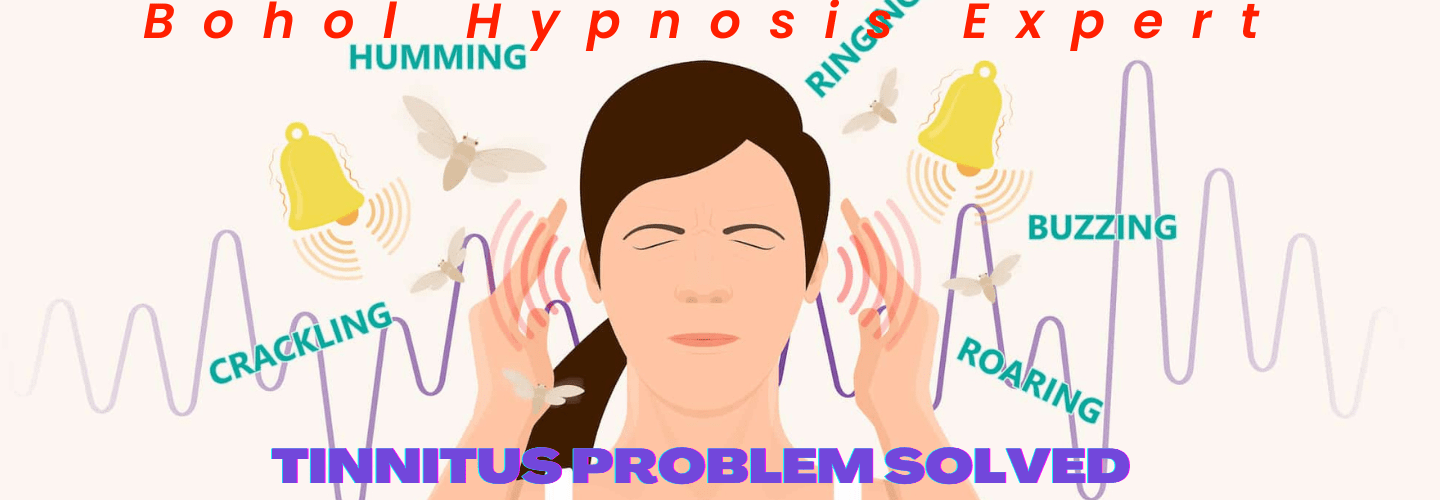
Hypnosis, EFT, and NLP are powerful tools to tackle the fear or phobia of bodily functions. These therapies explore deep-seated fears and phobias, offering personalized approaches to investigate and address root causes. Emotional Freedom Technique combines ancient practices with modern psychology to alleviate fears through acupressure and affirmations. Neuro-Linguistic Programming rewires cognitive responses to reshape thought patterns and behaviors related to fear. This integrated approach acknowledges the mind-body connection, providing tailored interventions for effective fear reduction and long-term emotional well-being.
Understanding Bodily Function Phobias
Individuals who experience an intense fear or phobia of bodily functions often grapple with significant distress and anxiety related to normal physiological processes. These fears can stem from various causes, including past traumas, learned behaviors, genetic predispositions, or even societal influences. For some individuals, the fear may manifest as a specific phobia, such as emetophobia (fear of vomiting) or scopophobia (fear of being seen or stared at while eating). Understanding the key cause of these phobias is vital in developing effective treatment strategies.
When it comes to addressing the fear or phobia of bodily functions, there are various treatment options available. Cognitive-behavioral therapy (CBT) has shown success in helping individuals challenge and reframe their negative thoughts and beliefs surrounding bodily functions. Exposure therapy, which involves gradually exposing individuals to their fears in a controlled setting, can also be beneficial. Additionally, relaxation techniques, mindfulness practices, and medication may be incorporated into treatment plans to help individuals manage their anxiety and distress effectively. Ultimately, a personalized approach that considers the individual's unique experiences and triggers is essential in overcoming these phobias.
Impact of Fear on Daily Life

The fear or phobia of bodily functions can greatly disrupt daily routines and quality of life for those affected. Fear management becomes a central focus for individuals grappling with these phobias, as the anxiety and distress they evoke can lead to significant daily challenges. Simple tasks like eating, using the restroom, or even engaging in social interactions can become sources of intense fear and discomfort. This fear can cause individuals to avoid certain situations or environments, leading to isolation and a sense of helplessness.
The impact of this fear on daily life can be profound. It may result in difficulties at work or in maintaining relationships, as the fear of bodily functions can overshadow all aspects of a person's life. Simple activities that others take for granted become challenging tasks for those with these phobias. Through understanding the daily challenges faced by individuals with bodily function phobias, the importance of effective interventions such as hypnosis, EFT, and NLP in alleviating these fears becomes evident.
Introduction to Hypnosis Therapy

Investigating the domain of hypnosis therapy uncovers a potent tool for addressing deep-seated fears and phobias related to bodily functions. Hypnosis techniques, a central component of hypnotherapy, involve inducing a trance-like state to enhance focus and suggestibility. This altered state of consciousness enables individuals to explore their subconscious thoughts and feelings, making it an effective method for confronting and overcoming fears surrounding bodily functions.
The benefits of hypnotherapy extend beyond symptom alleviation, delving into the root causes of phobias and fears. By tapping into the subconscious mind, hypnosis can help individuals reframe negative beliefs, cultivate coping mechanisms, and build resilience against triggers associated with bodily functions. Additionally, hypnosis therapy offers a safe and non-invasive approach, making it suitable for individuals seeking alternative methods for fear resolution.
Exploring Emotional Freedom Technique (EFT)

In investigating the Emotional Freedom Technique (EFT), one immerses into a unique therapeutic approach that combines elements of traditional Chinese medicine with modern psychology to address emotional distress and promote healing.
EFT research has shown promising results in treating phobias, anxiety, and trauma by focusing on acupressure points while addressing specific emotional triggers. Many individuals who have experienced EFT therapy have provided glowing testimonials, citing significant reductions in fear and anxiety levels after sessions.
The technique's foundation lies in the belief that balancing the body's energy system can lead to emotional well-being and mental clarity. Through tapping on meridian points and verbalizing affirmations, EFT aims to reprogram the brain's response to stressors, ultimately alleviating phobias and fears associated with bodily functions.
Neuro-Linguistic Programming (NLP) Basics

Neuro-Linguistic Programming (NLP) serves as a powerful tool for overcoming fears and phobias related to bodily functions. Understanding the effectiveness of NLP techniques, communication patterns, and change techniques can provide individuals with the necessary skills to address their anxieties.
NLP Techniques Effectiveness
How effective are Neuro-Linguistic Programming (NLP) techniques in addressing fears or phobias related to bodily functions?
NLP techniques application in addressing fears or phobias related to bodily functions have shown promising results in various NLP effectiveness studies. By utilizing NLP strategies like reframing negative thought patterns, anchoring positive emotions, and visualizations, individuals can rewire their cognitive responses to bodily functions, reducing fear and anxiety.
NLP's focus on the connection between neurological processes, language, and behavioral patterns allows for targeted interventions that can help individuals overcome deep-seated phobias. NLP effectiveness studies have demonstrated that when applied correctly and consistently, NLP techniques can be a valuable tool in empowering individuals to manage and overcome their fears related to bodily functions.
NLP Communication Patterns
Building upon the effectiveness of NLP techniques in addressing fears or phobias related to bodily functions, understanding NLP communication patterns is foundational in harnessing the power of Neuro-Linguistic Programming (NLP) basics.
NLP communication patterns explore how language and non-verbal cues influence our subconscious beliefs and behaviors. By recognizing and utilizing these patterns, individuals can effectively communicate with their subconscious mind to reframe limiting beliefs surrounding bodily functions.
Through NLP, practitioners can identify language structures, tonalities, and body language that impact one's perception of bodily functions, ultimately leading to transformative changes in thought patterns.
NLP Change Techniques
Exploring the fundamental NLP Change Techniques is essential in mastering the principles of Neuro-Linguistic Programming (NLP) and initiating transformative shifts in addressing fears or phobias related to bodily functions. NLP Change Techniques focus on identifying and modifying subconscious patterns that contribute to these fears.
By utilizing techniques such as reframing, anchoring, and visualization, individuals can reprogram their thought processes and responses to bodily functions. Reframing involves altering the way a situation is perceived, anchoring helps create positive associations with specific triggers, and visualization aids in envisioning a desired outcome.
Through consistent practice and guidance from trained NLP practitioners, individuals can effectively overcome their fears and phobias surrounding bodily functions by reshaping their subconscious patterns.
How Hypnosis Addresses Phobias

Through the utilization of hypnosis, individuals with phobias can access a powerful tool for addressing and overcoming their fears related to bodily functions. Hypnosis offers a range of benefits in the resolution of fear and phobias. By inducing a state of deep relaxation and heightened focus, hypnosis allows individuals to explore the root causes of their fears in a safe and controlled environment. This heightened state of awareness can help individuals reframe their perceptions and responses to the triggers of their phobias, leading to a gradual desensitization and eventual resolution of the fear.
Moreover, hypnosis can help individuals build coping mechanisms and enhance their self-esteem, empowering them to confront and manage their phobias effectively. The process of hypnosis is often tailored to the specific needs and experiences of the individual, ensuring a personalized approach to fear phobia resolution. Through guided imagery, suggestion, and relaxation techniques, hypnosis can facilitate a transformative journey towards overcoming phobias related to bodily functions.
EFT Techniques for Overcoming Fear

In exploring the domain of EFT techniques for overcoming fear, it is crucial to grasp the foundational aspects of EFT basics. Understanding the specific EFT tapping points is essential, as is appreciating the range of benefits EFT offers in addressing phobias.
EFT Basics for Fear
To effectively address fear using Emotional Freedom Techniques (EFT), practitioners must understand the fundamental EFT basics for overcoming fear. EFT tapping is a powerful tool for managing fear and phobias. Here are five key points to take into account when using EFT for fear management:
- EFT helps in identifying and addressing the root cause of fear.
- It involves tapping on specific acupressure points to release fear and negative emotions.
- Practitioners should focus on expressing and accepting their fears during the process.
- EFT encourages a positive mindset and affirmations to counter fear-based thoughts.
- Consistent practice and patience are essential for effective fear reduction using EFT techniques.
EFT Tapping Points
Utilizing specific acupressure points through EFT tapping techniques plays a pivotal role in addressing and alleviating fear and related phobias effectively. EFT tapping involves gently tapping on specific meridian points on the body while focusing on the fear or phobia, helping to release emotional blockages.
The key tapping points include the top of the head, eyebrow, side of the eye, under the eye, under the nose, chin, collarbone, under the arm, and the karate chop point. By tapping on these points, individuals can reduce anxiety, fear, and phobias by calming the body's stress response and rebalancing the body's energy system.
EFT tapping techniques provide a non-invasive and empowering method for managing and overcoming fears, offering a holistic approach to emotional well-being.
EFT Benefits for Phobias
Employing EFT techniques can provide individuals with a potent toolset for effectively overcoming phobias and fears related to bodily functions. EFT benefits for phobia resolution include:
- Rapid reduction of fear responses
- Empowerment through self-help techniques
- Addressing underlying emotional issues
- Creating new neural pathways for positive associations
- Providing a non-invasive and drug-free approach
These benefits make EFT a valuable method for individuals seeking to overcome their phobias related to bodily functions. By tapping into the body's energy system and addressing the root causes of fear, EFT offers a holistic approach to resolving phobias and promoting emotional well-being.
NLP Strategies for Fear Resolution

Drawing from the principles of Neuro-Linguistic Programming (NLP), individuals can effectively address and overcome fears related to bodily functions through targeted psychological techniques. NLP strategies focus on fear management and anxiety reduction by understanding how individuals mentally represent their fears.
One key technique in NLP is reframing, where individuals are guided to change the way they perceive the feared bodily functions. By altering the internal representation of these functions, individuals can diminish the importance of their fear responses. Another effective NLP strategy is anchoring, which involves associating a specific trigger with a positive emotional state to counteract the negative emotions linked to bodily functions.
Moreover, NLP techniques emphasize the importance of language patterns and internal dialogue in shaping fear responses. By becoming aware of the language used when thinking about bodily functions, individuals can reframe negative self-talk into more empowering and positive statements. This shift in linguistic patterns can contribute significantly to reducing anxiety and fear related to bodily functions.
NLP strategies offer a structured and systematic approach to fear resolution, empowering individuals to take control of their emotions and responses towards bodily functions.
Integrating Hypnosis, EFT, and NLP

Drawing on the groundwork of NLP strategies for fear resolution, the integration of hypnosis, EFT, and NLP offers a holistic approach to addressing and overcoming fears associated with bodily functions. This integrative approach recognizes the intricate connection between the mind and body, allowing for a thorough and effective method of fear reduction.
Here are five key aspects of integrating hypnosis, EFT, and NLP:
- Mind-Body Connection: Acknowledging and leveraging the powerful interplay between mental processes and physical sensations.
- Thorough Evaluation: Conducting a detailed assessment to identify the root causes of fear related to bodily functions.
- Tailored Interventions: Customizing hypnosis, EFT, and NLP techniques to suit the individual's specific needs and fears.
- Progress Tracking: Monitoring and adjusting the treatment plan as necessary to promote steady progress and successful outcomes.
- Empowerment and Resilience: Equipping individuals with tools to manage anxiety, build resilience, and maintain a positive mindset towards bodily functions.
Frequently Asked Questions
Can Bodily Function Phobias Be Passed Down Through Genetics?
Bodily function phobias may exhibit a genetic component, with studies suggesting potential inheritance of specific fears. Understanding this genetic link can inform treatment options, guiding individuals towards personalized interventions to address inherited phobias effectively.
Are There Any Specific Bodily Function Phobias That Are More Common in Certain Age Groups?
Certain bodily function phobias, like emetophobia (fear of vomiting), tend to be more prevalent in younger age groups. Understanding the age-specific prevalence of these phobias can inform tailored treatment options for improved effectiveness and outcomes.
How Do Bodily Function Phobias Impact Relationships With Others?
Bodily function phobias can strain relationships, leading to avoidance behaviors or embarrassment. Individuals may struggle with discussing or being present during certain activities, impacting friendships. Coping mechanisms such as therapy or gradual exposure can help manage these challenges.
Are There Any Cultural or Societal Influences That Contribute to the Fear of Bodily Functions?
Cultural influences and societal pressures play a significant role in shaping individuals' fear of bodily functions. These influences can stem from taboos, social norms, religious beliefs, and media portrayals, contributing to the development and reinforcement of such fears.
Can Hypnosis, Eft, and NLP Be Used to Address Other Types of Phobias Besides Bodily Functions?
Overcoming anxieties and enhancing mental wellness are pivotal in addressing various phobias. Utilizing specialized techniques like hypnosis, EFT, and NLP can provide effective tools for conquering fears beyond bodily functions, promoting holistic well-being.
Conclusion
To sum up, the combination of hypnosis, EFT, and NLP offers a powerful approach to resolving the fear or phobia of bodily functions. By understanding the root causes of these fears and utilizing targeted techniques from each modality, individuals can begin to address and overcome their anxieties.
This integrated approach provides a thorough and effective way to alleviate the impact of these phobias on daily life, allowing individuals to experience a sense of freedom and empowerment.
Take the Next Step
Do not be afraid to reach out to me, Mark E Wilkins, to assist you in any issues you might have. Most Hypnotherapy sessions last 2 hours and EFT Sessions are usually handled with one session. Life Coaching is 45 minute session, once a week. Self-Hypnosis is taught in one session, and lasts a lifetime.
To make an appointment, first listen to the Pre-talk and fill out he Complementary Healthcare Provider Disclosure. The use the Contact Form to request an appointment with the Bohol Hypnosis Expert.
Self-help downloads are available. The self-hypnosis program to teach you how to self-hypnotize is here.





